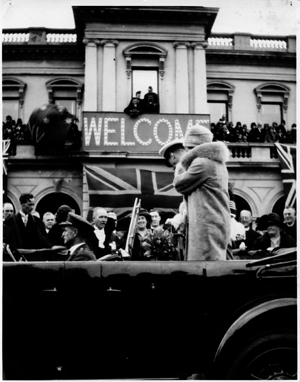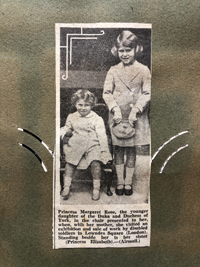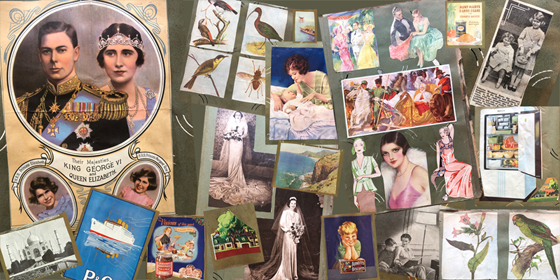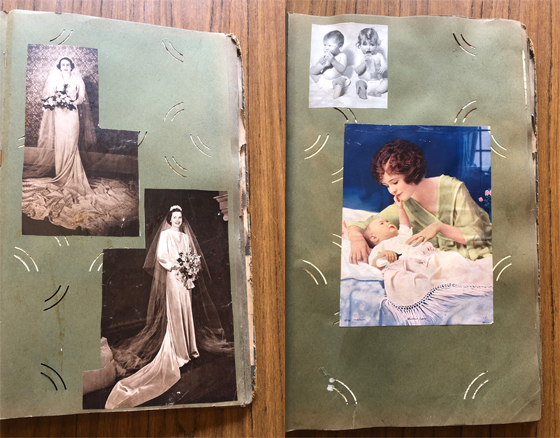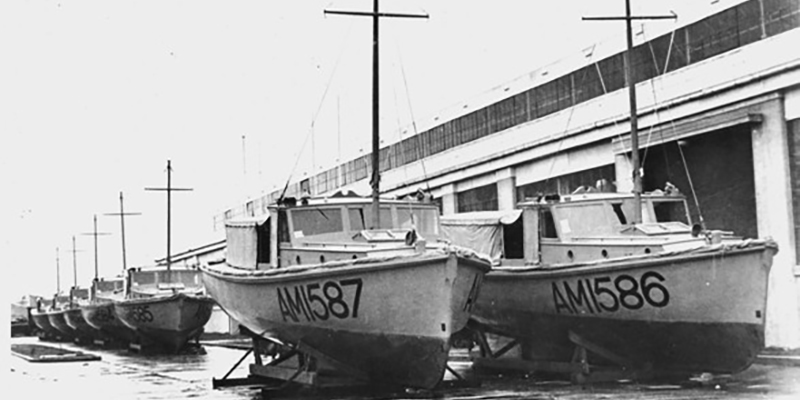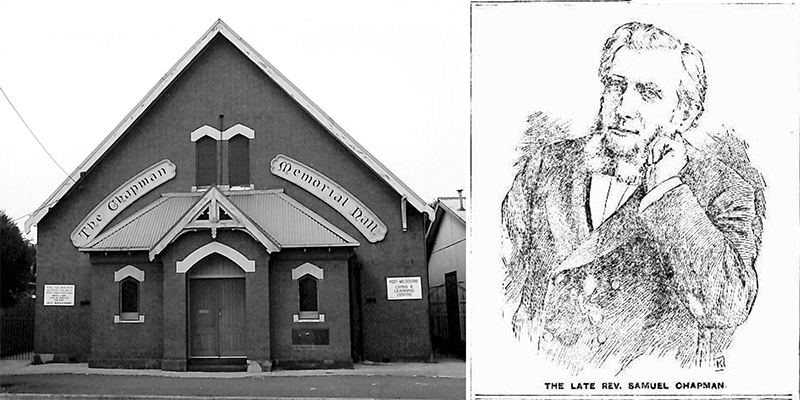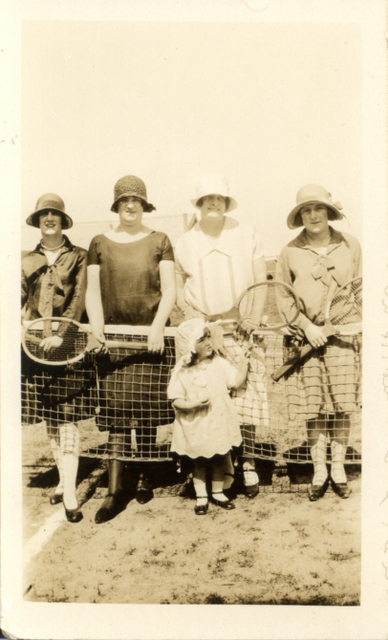A Young Girl’s Interests
In 1927 the Duke and Duchess of York (future King George VI and Queen Elizabeth, later the Queen Mother) visited Australia for the official opening of Parliament House in Canberra.
After the ceremonies, the royal couple returned to Victoria by train alighting at Montague so they could say goodbye from an open car at brief civic receptions outside South Melbourne and Port Melbourne Town Halls as they returned to the HMS Renown berthed at Princes Pier.
The photograph (left) of the Duke and Duchess of York outside Port Melbourne Town Hall on 11 May 1927 from the PMHPS Collection shows the reception outside the Town Hall in Bay Street. Town Clerk, Syd Anderson (tall man to the left of the chauffeur) and the Mayor, William Howe (to the immediate right of the chauffeur) are easily identified and the image appears to have captured Mrs Howe presenting a bouquet of flowers to the Duchess.
The Record, 14 May 1927 reported that Mrs Howe presented a bouquet tied with white ribbons and inscribed with “Bon Voyage” saying “Will you accept these flowers as a token of love and loyalty of the citizens of Port Melbourne”.
As is usual in these occasions, the Mayor addressed the royal couple and the Duke responded however that same issue of The Record reported that
“Daphne Skinner (eight years old) from St Joseph’s , Myrtle Bradbury (six years old) from Nott Street, and Hazel Trembath (five years old) from Graham Street, presented the Duchess with a beautiful work-box, made of highly polished figured Queensland maple, inscribed ‘To Princess Elizabeth from the school-children of Port Melbourne’.
Princess Elizabeth (now Queen Elizabeth II) was barely one year old and had remained in England while her parents undertook the trip to Australia. The work-box, besides being a functional item, included a thimble made of Australian gold with an Australian opal mounted on the face.
So who were these three young girls who represented the schoolchildren of Port? Ray Jelley has done some research for us.
Daphne Skinner was born in 1918. Her parents Herbert and Daphne Skinner (née Rendall) were married in 1913 and their first child Margaret was born in 1915 and a further child, Alfred, was born in 1925. Herbert was a stevedore and the family moved in to Albert Street around the time of their marriage.
Daphne married Francis Norman in 1950 and they lived at 29 Albert Street. Daphne was a dressmaker. Francis died in 1989 and Daphne died on 8 June 2012, aged 93.
PMHPS member, Jim Power knew Daphne Norman as an Albert Street neighbour for many years. He remembers her parents and her brother Alf who lived with his sister and brother-in-law after his marriage broke up. He recalls her sister, Rita, was a war bride and moved to American where she had 8 children.
Myrtle Bradbury was born in 1920 to Henry and Elizabeth Bradbury (née Bradley). Myrtle had two elder siblings, Charles (b. 1912) and Elsie (b. 1913). Henry and Elizabeth appear on the 1914 electoral roll at 397 Princes Street and on the 1917 roll at 102 Raglan Street and continued to live in Raglan Street (possibly at various addresses) into the 1930s.
Myrtle married Arthur Lawson in 1942 and the young couple were living with her parents at 19 Raglan Street in 1943. Arthur was a ‘trainee’ and Myrtle was a wrapper. By the 1960s, Arthur was in sales, Myrtle was looking after the home and they were living in Bentleigh. Arthur died in 1982 and Myrtle in 1995.
Hazel Trembath was born in 1921 to Thomas and Dorothy Trembath who moved to 99 Stokes Street in the early 1920s. She married Ernest Wilson in 1939 and had four children. Ernest died in 1966 and Hazel in 2013.
As a young girl and teenager, Hazel kept a scrapbook that is now in the PMHPS collection. It gives a fascinating insight into a young girl’s interests at that time.
Perhaps due to her brush with royalty as a five year old there are cuttings relating to the royal family particularly the young Princesses Elizabeth and Margaret (left) but it is a very eclectic mix (below).
Exotic locations and buildings such as the Taj Mahal, an advertisement for P&O cruises, fashionable ladies in elegant evening dresses, as well as colourful birds, animals and insects are just some examples.
Domestic life is well represented with cuttings of modern houses and appliances including a large refrigerator, door open, chock-a-block with food. Luxuries perhaps unattainable in Port Melbourne during those post-depression years. Individual products such as Robertson’s Mince Meat, promoted as ‘Visions of this year’s mother’s magic’, Aunt Mary’s Baked Beans and Arnott’s Biscuits also appear.
There are whole pages of brides and yet more pages of babies and mothers with babies.
Soon enough Hazel was a bride herself, just eighteen or nineteen when she married in 1939, and although she may have continued to add to the scrapbook into the 1940s, the war, married life and motherhood, in 1944, would have changed her life dramatically.
Hopefully, Her Majesty The Queen has treasured her work-box with that magnificent gold thimble as much as we treasure Hazel’s scrapbook.
References
1927 ‘HISTORIC CEREMONY AT CANBERRA TO DAY.’, The Argus (Melbourne, Vic. : 1848 – 1957), 9 May, p. 19. , viewed 09 Jun 2021, http://nla.gov.au/nla.news-article3853464
1927 ‘OUR ROYAL VISITORS’, Record (Emerald Hill, Vic. : 1881 – 1954), 14 May, p. 1. , viewed 09 Jun 2021, http://nla.gov.au/nla.news-article164452123
Images of Hazel’s scrapbook were taken by John Kirby and David Thompson and digitally compiled for this story by David Thompson.

